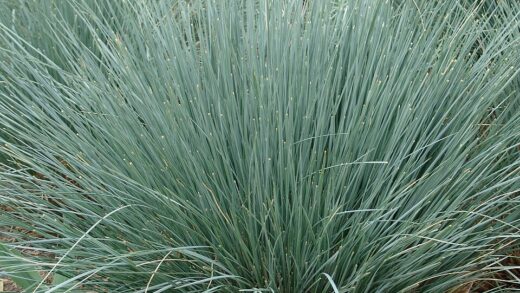The concept of “pruning” as it applies to the wild tulip is quite different from the shaping and trimming associated with shrubs or trees. For this bulbous perennial, the focus is not on controlling its size or shape, but rather on a few timely cuts and, more importantly, on knowing what not to cut. The most crucial aspect of post-flowering care revolves around the management of the plant’s foliage. Proper cutting back, or the lack thereof, has a direct and significant impact on the health of the bulb and its ability to flower in subsequent years. Understanding the purpose behind each action—from removing spent blooms to allowing the leaves to wither naturally—is key to ensuring the long-term vigor of your wild tulip colony.
The primary intervention that can be considered a form of pruning is the practice of deadheading. This involves the removal of the flower head after the petals have fallen. While not strictly necessary for the plant’s survival, it is a highly beneficial practice for the gardener who wishes to encourage strong perennial performance. By preventing the plant from expending its valuable energy on producing seeds, deadheading redirects those resources back into the bulb. This results in a larger, more robust bulb that is better equipped to produce a spectacular display the following spring.
However, the most critical “pruning” rule for wild tulips is what to leave alone. The leaves must be allowed to remain on the plant long after the flower has faded. The foliage, even as it starts to look untidy, is the plant’s engine for energy production. It is through photosynthesis in these leaves that the bulb is replenished and recharged for the next year. Cutting the leaves back prematurely while they are still green is the most common and detrimental mistake a gardener can make, as it effectively starves the bulb and will lead to a dramatic decline in the plant’s health and flowering capacity.
Patience is therefore the most essential tool in the pruning and cutting back of wild tulips. The gardener must be willing to tolerate a period of yellowing, untidy foliage in late spring and early summer for the sake of the plant’s long-term well-being. This natural process of senescence is a sign that the plant is successfully completing its life cycle. Once the leaves have turned completely yellow or brown, they have fulfilled their purpose, and only then is it appropriate to tidy them away. This patient and informed approach is the hallmark of successful bulb cultivation.
The purpose of post-flowering care
The care you provide to a wild tulip after it has finished blooming is arguably more important than the care you give it beforehand. This post-flowering period is the most critical phase for the bulb’s development and its ability to perennialize and multiply. The primary purpose of all post-flowering care is to maximize the amount of energy that is stored in the underground bulb. This stored energy is the sole resource the plant will have to survive its summer dormancy and to initiate growth and produce a flower in the following spring.
More articles on this topic
Immediately after flowering, the plant shifts its focus from producing a beautiful display to securing its future. The leaves, no longer needing to support a flower, dedicate all their photosynthetic output to creating sugars. These sugars are then transported down the stem and stored as starch within the fleshy scales of the bulb. This is why the health and longevity of the foliage after flowering are so paramount. Every day that the leaves remain green and active is another day of energy production and storage for the bulb.
This energy storage has two main functions. First, it provides the fuel for the following year’s display. The size and quality of next year’s flower are largely determined by the amount of energy the bulb was able to store during the current post-flowering period. A bulb that has been well-nourished by a long period of photosynthesis will be large and firm, capable of producing a strong stem and a vibrant flower. A “starved” bulb will be smaller and may only have enough energy to produce leaves, or it may fail to emerge at all.
Second, this stored energy is vital for the plant’s propagation. The formation of small offset bulbs at the base of the mother bulb and the extension of underground stolons to form new bulbs are both energy-intensive processes. A well-charged mother bulb is far more likely to produce healthy offsets and spread, leading to the desired naturalization and the creation of a larger, more impressive colony over time. Therefore, every action taken after flowering should be with the goal of supporting the foliage and, by extension, the bulb.
When and what to cut
The first and only part of the wild tulip that should be cut back promptly is the spent flower. This process, known as deadheading, should be done as soon as the flower petals have withered and fallen. You will see a small, green ovary begin to swell at the top of the stem where the flower used to be. This is the developing seed pod. The goal is to remove this before the plant invests a significant amount of energy in it. Using a pair of clean scissors or pruners, snip off the flower stem just below this developing pod.
More articles on this topic
It is important to be precise in what you cut when deadheading. You should only remove the very top of the stem that holds the spent flower. Leave the rest of the flower stalk and, most importantly, all of the leaves completely intact. The stem itself can also photosynthesize to a small degree, and it serves as the conduit for transporting sugars from the leaves down to the bulb. Removing the entire stem at this stage would be a mistake and would hinder the energy storage process.
The next and final cutting back occurs much later in the season. You must wait until the foliage has completed its work and has died back naturally. The visual cue for this is a complete change in color from green to yellow or brown. The leaves will also become limp and withered. At this stage, they are no longer photosynthesizing, and the connection to the bulb is beginning to break down. This process can take anywhere from four to six weeks after flowering has finished.
Once the leaves are fully yellow or brown, they can be safely removed for aesthetic reasons. Often, they can be pulled away from the ground with a gentle tug. If they still offer resistance, it is best to wait a little longer. If you prefer a cleaner cut, you can use shears to trim the dead foliage at ground level. This final cleanup removes the dead plant material, which can help to reduce the chances of fungal diseases overwintering in the garden bed, and it leaves the area looking tidy for the summer.
The importance of leaving the foliage
The foliage of the wild tulip serves as the plant’s power station, and leaving it in place after flowering is a non-negotiable rule for long-term success. Each leaf is a complex biological factory, using chlorophyll to capture sunlight and convert carbon dioxide and water into the simple sugars that fuel the plant. This process of photosynthesis is the only way the bulb can build up the starchy reserves it needs to survive dormancy and bloom again. To remove the leaves prematurely is to demolish the factory before its most important production run is complete.
The period of energy storage after flowering is surprisingly long. It can take up to six weeks or even longer for the leaves to fully complete the process of photosynthesis and for all the manufactured nutrients to be transported down to the bulb. During this time, it is crucial to continue caring for the leaves. Ensure they receive adequate sunlight and that the soil remains moist (but not waterlogged) to keep them functioning efficiently for as long as possible. Healthy, well-watered leaves will work harder and longer for the benefit of the bulb.
Many gardeners find the appearance of the dying foliage to be untidy. It is tempting to want to braid, tie up, or fold the leaves to make them look neater. However, these practices should be avoided. Bending or tying the leaves can damage their cellular structure, creasing the vascular tissues (the “veins”) that are responsible for transporting water up and sugars down. This damage can significantly reduce the efficiency of the leaves, effectively choking off the energy supply to the bulb. It is best to let the leaves lie naturally, however unruly they may seem.
To manage the aesthetic challenge of the yellowing foliage, consider strategic companion planting. Plant the wild tulips among perennials that emerge later in the spring, such as hostas, ferns, or geraniums. As the tulip foliage begins to decline, the growing leaves of these companion plants will expand and gracefully hide the withering tulip leaves from view. This allows the tulips to complete their natural cycle without creating an eyesore in the garden bed, providing a practical and beautiful solution to the problem.
Managing the appearance of dying leaves
Dealing with the untidy phase of dying tulip foliage is a common challenge for gardeners who value both plant health and garden aesthetics. One of the most effective strategies is camouflage through thoughtful companion planting. By interspersing your wild tulips with later-emerging perennials, you can create a seamless transition. As the tulips finish their display and their leaves start to yellow, the fresh growth of plants like hostas, daylilies, or ornamental grasses will begin to fill in and cover the declining foliage. This creates a succession of interest in the garden bed and solves the aesthetic issue in a natural, harmonious way.
Another approach is to choose the location of your tulip planting with this period in mind. Instead of planting them at the very front of a prominent border, consider placing them in the middle or back layers. In these positions, the yellowing leaves will be less noticeable, obscured by the plants growing in front of them. Naturalized drifts in a woodland garden, under shrubs, or in a meadow setting are also ideal, as the slightly unkempt look of the dying leaves fits perfectly with the informal and naturalistic style of these garden areas.
If your tulips are in a more formal or highly visible location, you can use temporary visual distractions. Place a few attractive containers with vibrant summer annuals near the patch of declining tulip foliage. The eye will be naturally drawn to the fresh color and form of the potted plants, making the yellowing leaves in the background much less prominent. This technique allows you to maintain a polished look in your key garden areas while still allowing the bulbs to complete their essential life cycle undisturbed.
Finally, it is important to adjust your own perspective. Understand that the period of yellowing foliage is not a sign of failure or neglect, but rather a sign of success. It is the visual evidence that your tulips are thriving and are hard at work creating the beautiful display you will enjoy next year. Embracing this natural process as a necessary and temporary phase of the gardening year can help you to appreciate the entire life cycle of the plant, not just its fleeting moment of peak bloom. This shift in mindset can transform an “untidy” phase into a reassuring one.


















